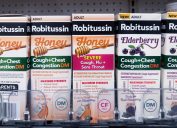FDA Issues New Warning on Hidden Dangers of OTC Pain Relievers: "Stop Right There"
The agency is alerting consumers to the consequences of mixing medication.

Our medicine cabinets are full of a variety of over-the-counter (OTC) drugs that can be used whenever a problem presents itself. But while we're careful to not take too much of any one product at a time, many of us don't think twice about mixing two OTC meds. For instance, when using cough and flu medicine to relieve symptoms, you might still take a pain reliever later in the day to treat a lingering headache. Despite this being a common practice, the U.S. Food Drug and Administration (FDA) is now warning consumers to "stop right there" and reconsider what they're using due to the hidden dangers of OTC pain relievers.
In a Feb. 1 consumer update, the FDA indicated that many people don't realize how easy it is to overuse acetaminophen as a pain reliever. According to the agency, more than 600 medications—both OTC and prescription—contain acetaminophen, which can be used alone or in combination with other ingredients "to reduce fever, and to relieve pain from headaches, muscle aches, menstrual periods, sore throats, toothaches and backaches."
Acetaminophen, which is sold by itself under the brand name Tylenol, can be found in many of the OTC medications used to treat cold, cough, and flu symptoms—which is a group of drugs 7 in 10 people in the U.S. use regularly, according to the FDA. It is also used in "many commonly prescribed medications in combination with pain relievers such as codeine, oxycodone and hydrocodone," the agency added.
The recommended maximum daily dose of acetaminophen for adults is 4,000 milligrams overall—no matter how many medicines you are taking. In order to avoid going over that, the FDA advises against taking more than one OTC medicine with acetaminophen a day.
"Be cautious not to exceed the daily limit of acetaminophen when using a single medicine or combination of medicines containing this drug," the FDA warned in its new update. "Taken carefully and correctly, these medicines can be safe and effective. But taking too much acetaminophen can lead to overdose and severe liver damage."
Symptoms of an acetaminophen overdose can include nausea, vomiting, abdominal pain, confusion, and yellowing of the skin or eyes. But you might not always realize you've taken too much acetaminophen, as some people may not have any noticeable signs right after an overdose.
"Symptoms may take several days to appear. And even when they become apparent, these signs may initially mimic flu or cold symptoms," the agency explained, noting that severe cases of acetaminophen overdose "may require liver transplantation and can cause death."
The proliferation of acetaminophen among OTC pain relievers means it is important that you read the Drug Facts label before deciding which products to buy or use—especially if you're planning to take two or more products at the same time, the FDA cautioned.
Finally, the agency warned that the word "acetaminophen" is not always spelled out fully on drug labels. Sometimes it's shortened to abbreviations such as "APAP, Acetaminoph, Acetaminop, Acetamin, or Acetam" instead. To help you figure out what to watch out for, read on for more information on some of the most popular medications that contain acetaminophen.
RELATED: FDA Says Never Take These OTC Medications Before Driving in New Alert.
1
Alka-Seltzer Plus
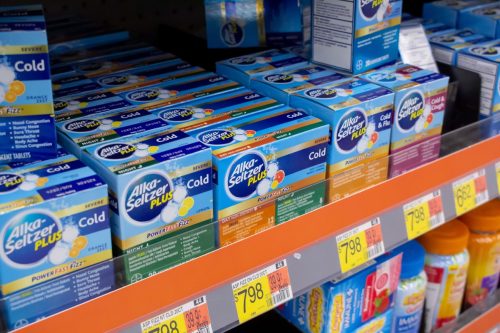
The original form of Alka-Seltzer relies primarily on aspirin to provide relief for minor aches, pains, inflammation, fever, headache, heartburn, stomachache, indigestion, acid reflux, and hangovers.
But its sister product, Alka-Seltzer Plus, was created to treat cold and flu symptoms—and the products in this line do include acetaminophen as an active ingredient.
RELATED: Man Killed by Vitamin D: "Supplements Can Have Very Serious Risks," Coroner Says.
2
DayQuil
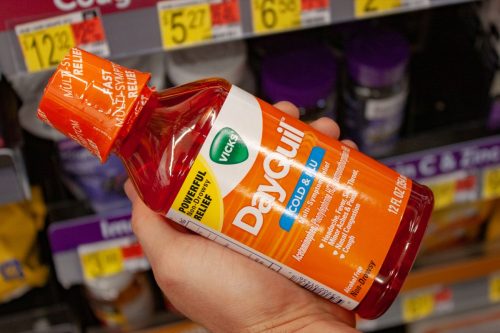
According to Vicks' website, "DayQuil contains 325 milligrams of acetaminophen per liquidcap or 650 milligrams per liquid dose."
RELATED: FDA Issues Warning About Lead in Family Dollar and Dollar Tree Cinnamon.
3
Excedrin
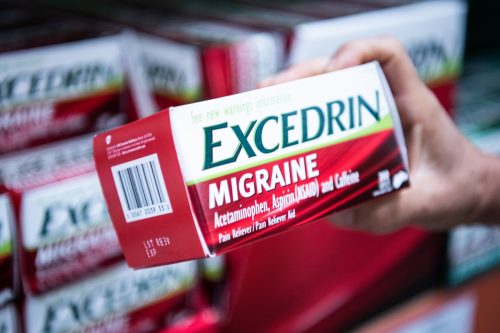
The three main active ingredients in all Excedrin Headache and Migraine Relief medications are aspirin, caffeine, and acetaminophen.
4
Midol
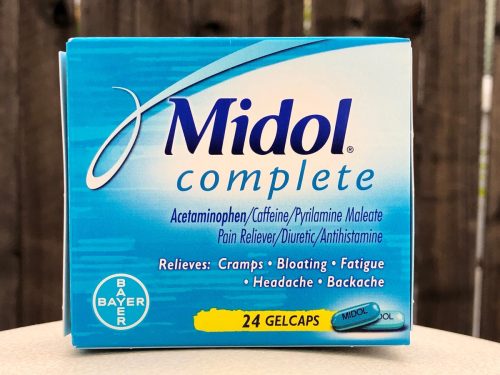
Many people use Midol to relieve their menstrual pain and cramps. But be aware, most Midol products include acetaminophen to provide this pain reduction.
5
Mucinex
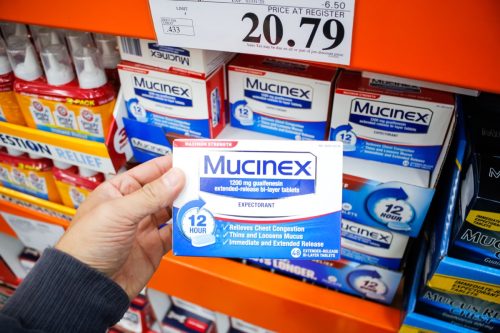
Several Mucinex products do contain acetaminophen to "help bring your fever down, as well as relieve minor aches and pains, headache and sore throat," according to the company's website.
RELATED: FDA Issues New Warning About 9 Supplements With "Toxic" Ingredient.
6
NyQuil
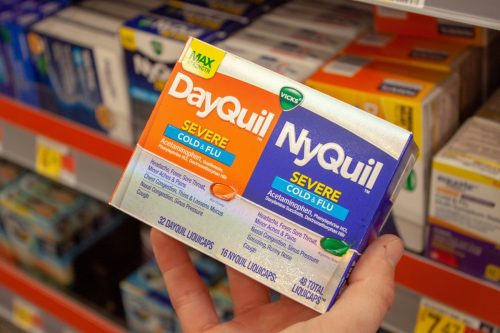
Just like its daytime sister medication, NyQuil also contains acetaminophen.
7
Tylenol

Tylenol is the most well-known acetaminophen medication: Acetaminophen is the "primary active ingredient" in all of Tylenol's products.
Best Life offers the most up-to-date information from top experts, new research, and health agencies, but our content is not meant to be a substitute for professional guidance. When it comes to the medication you're taking or any other health questions you have, always consult your healthcare provider directly.
- Source: FDA: Don’t Overuse Acetaminophen


